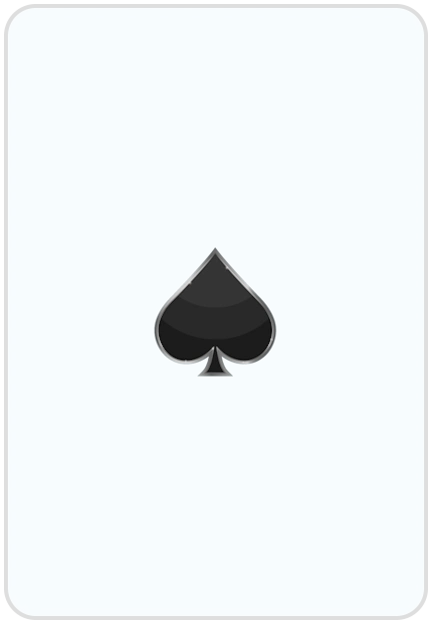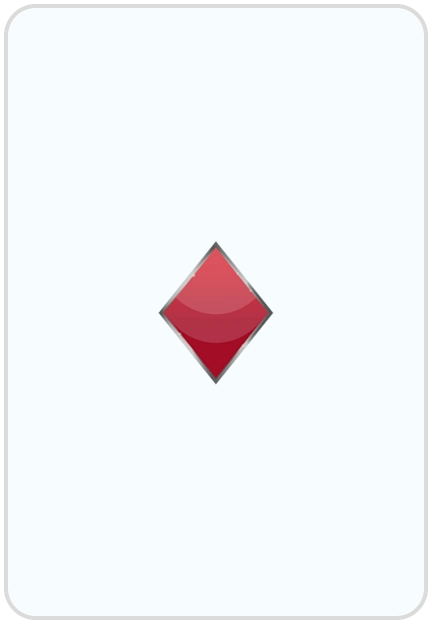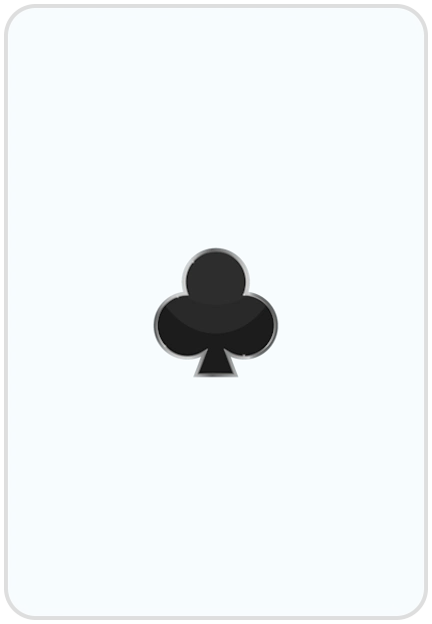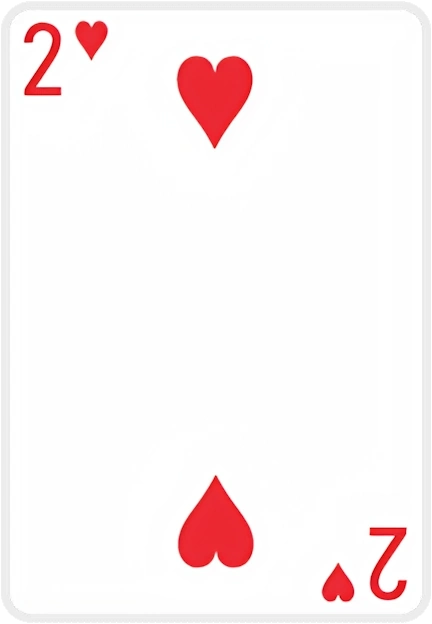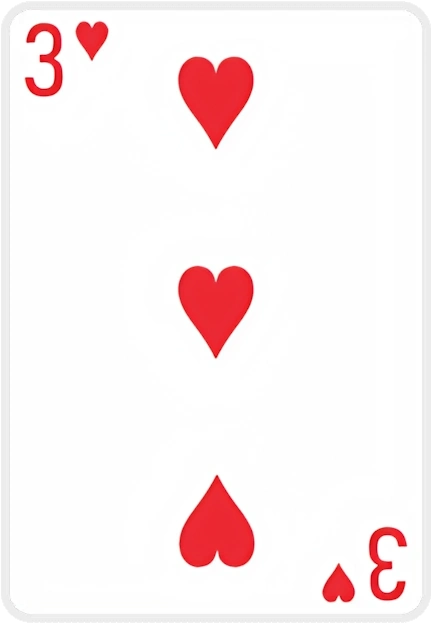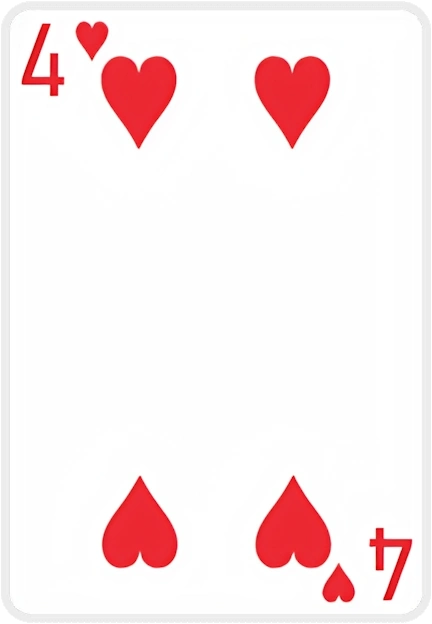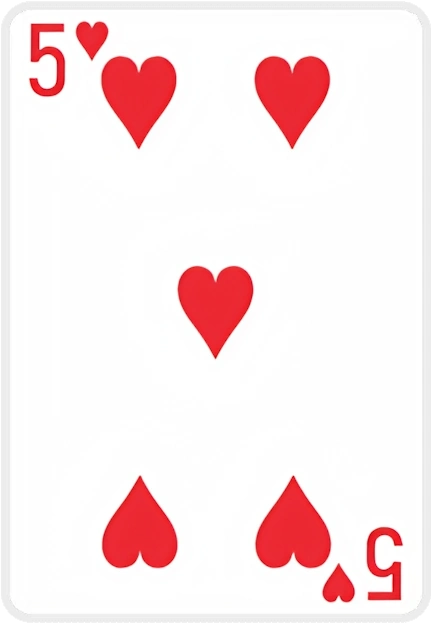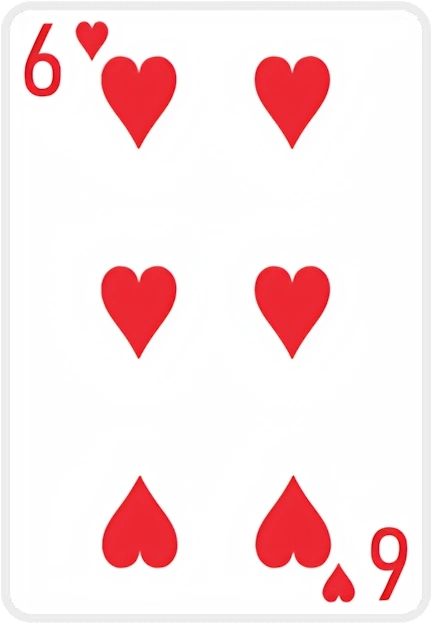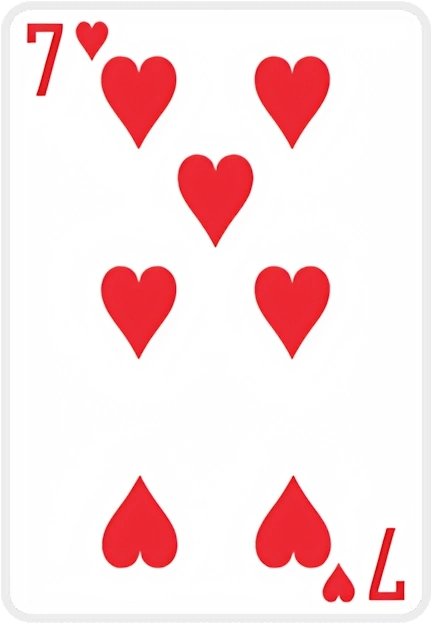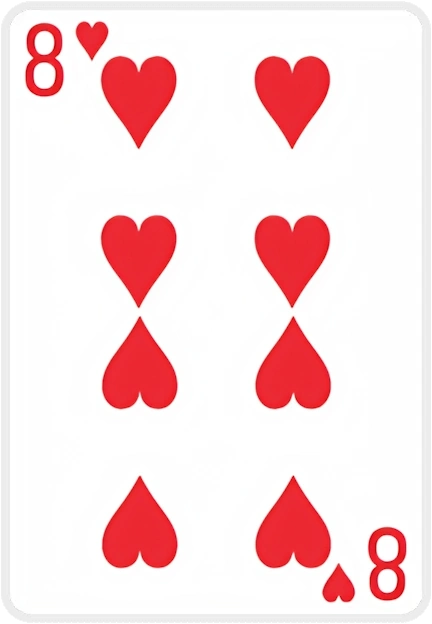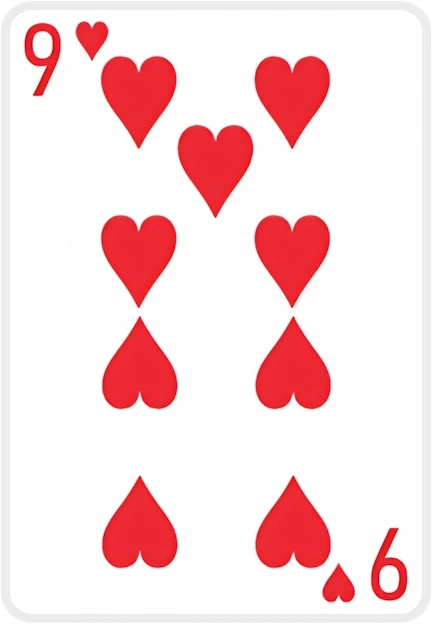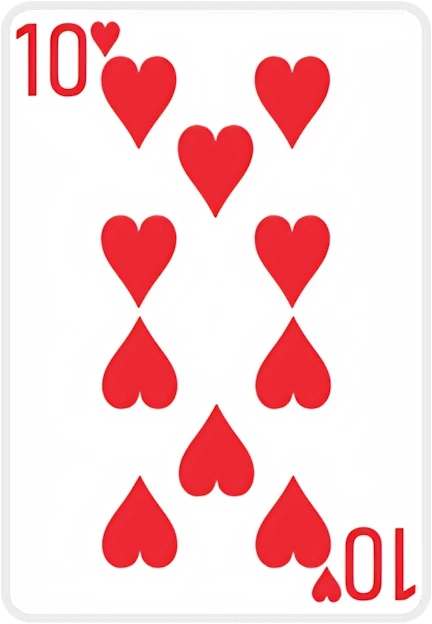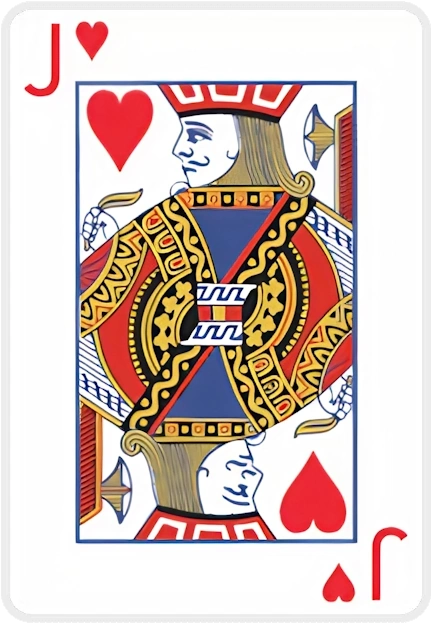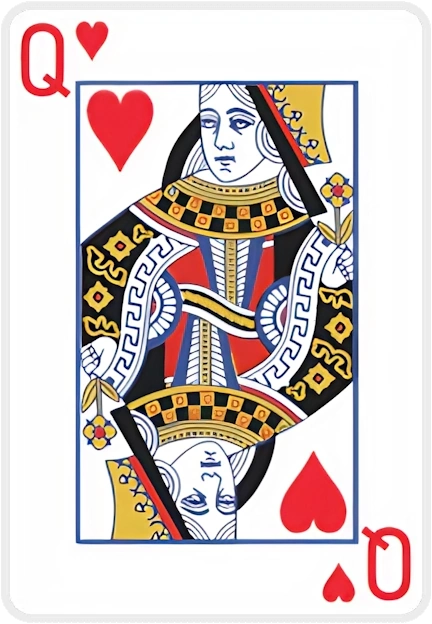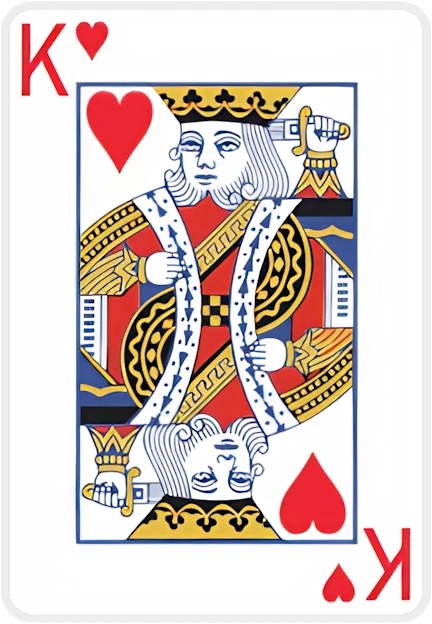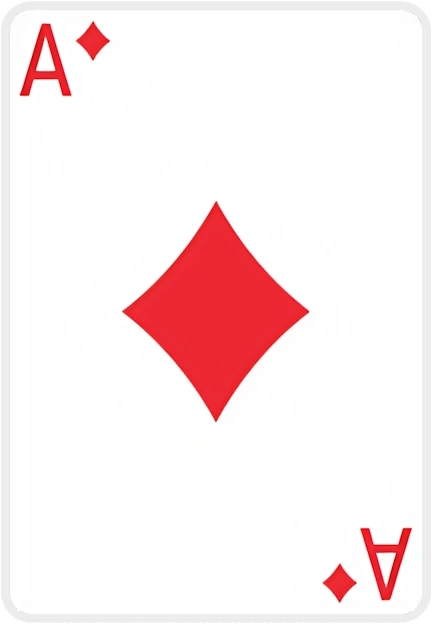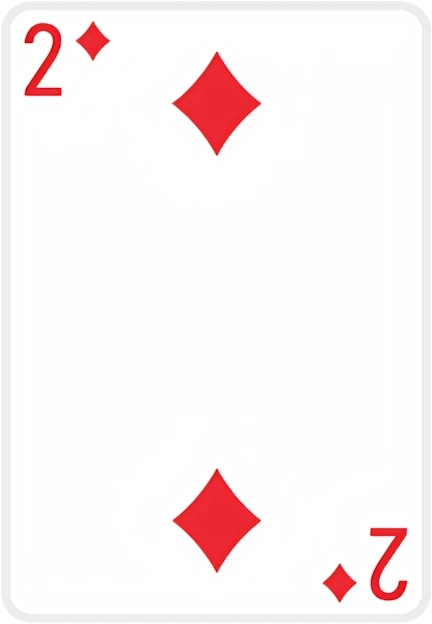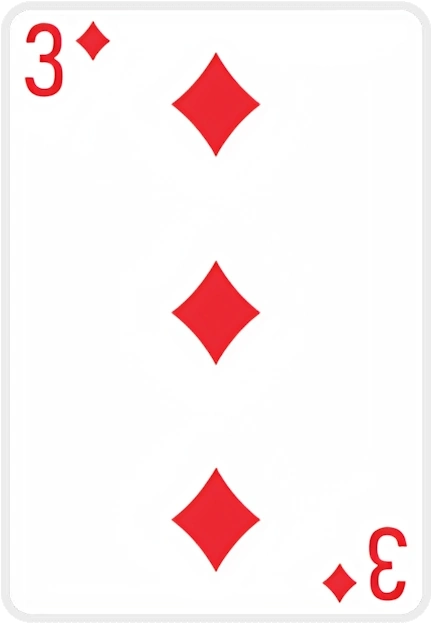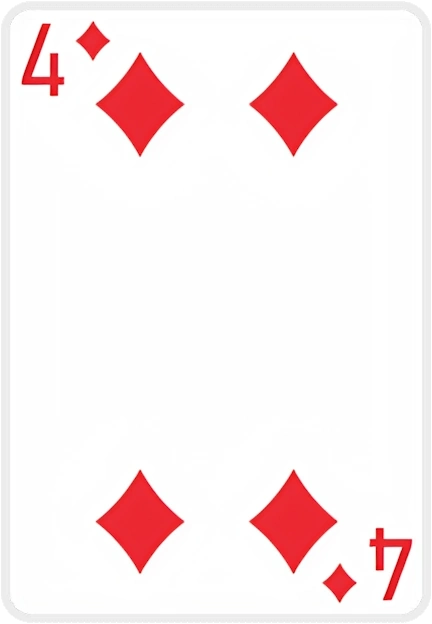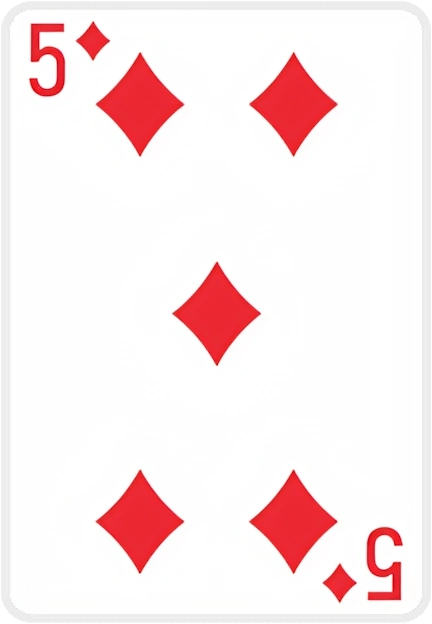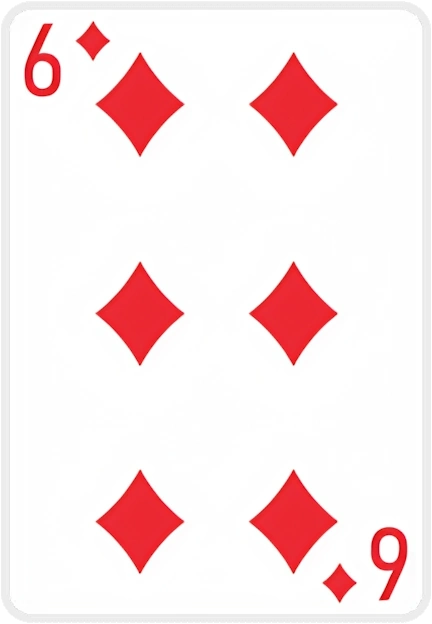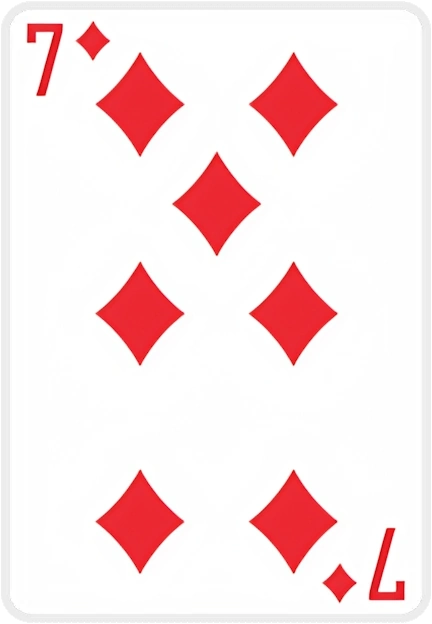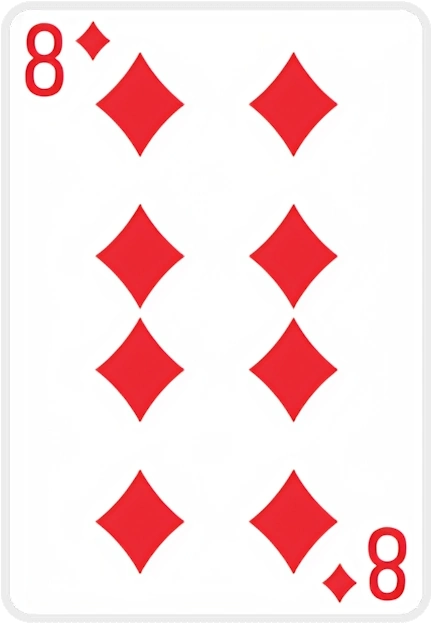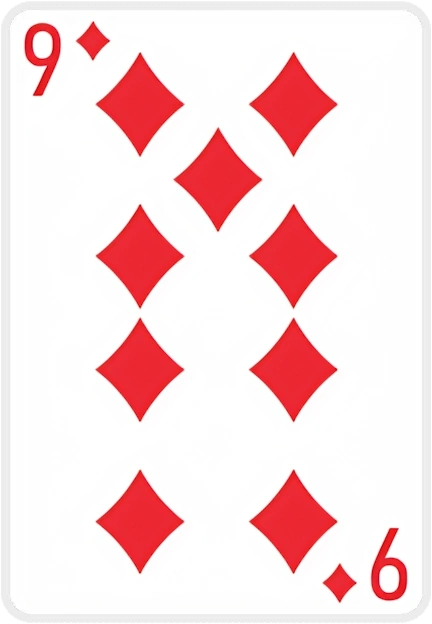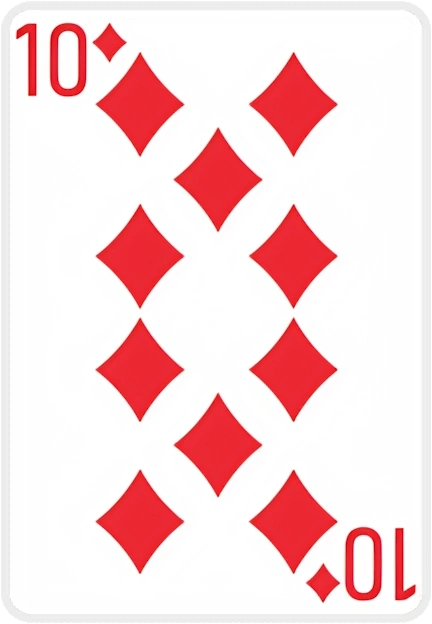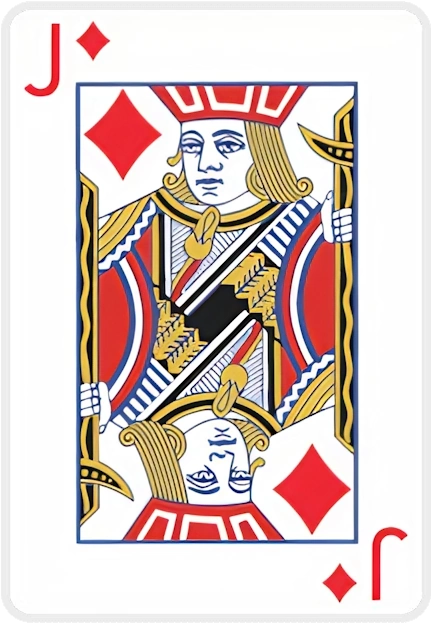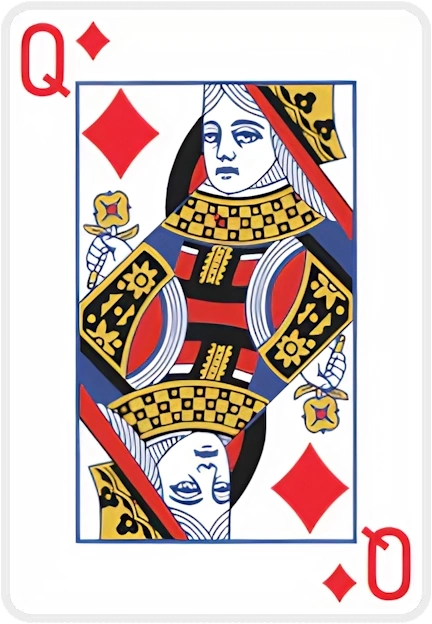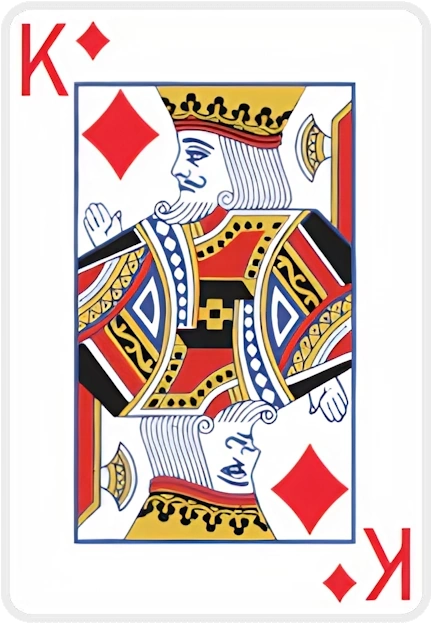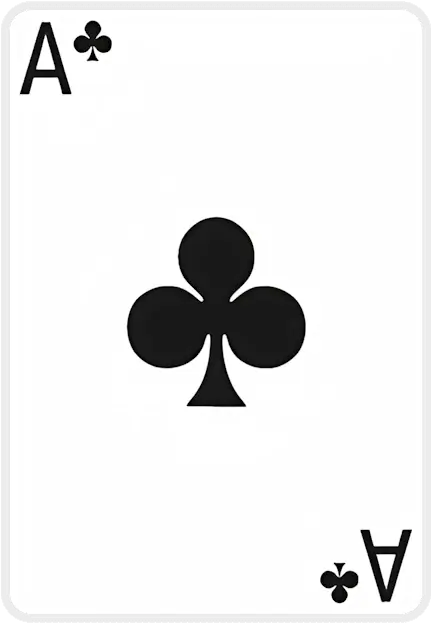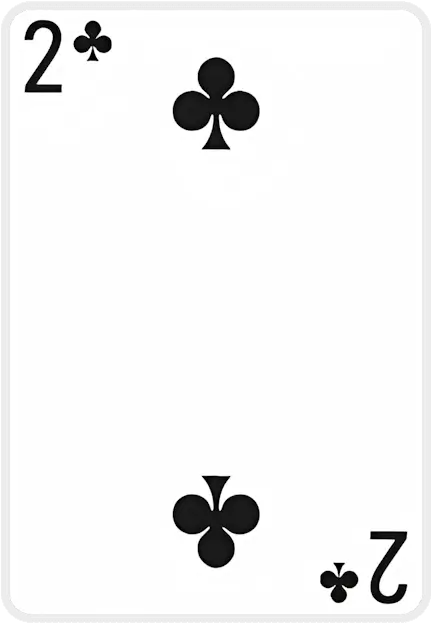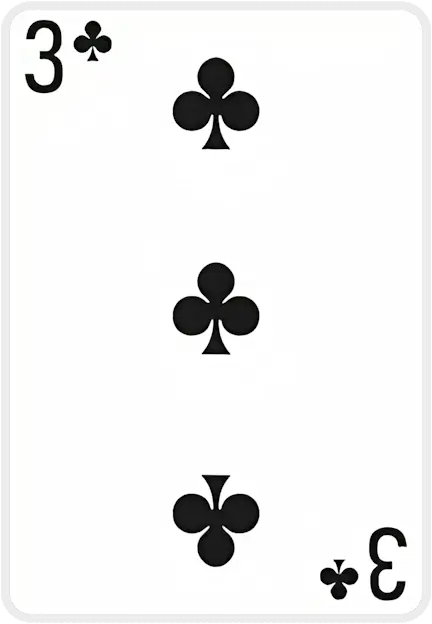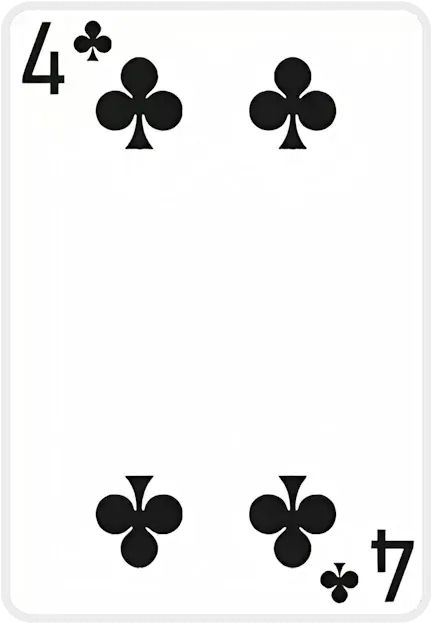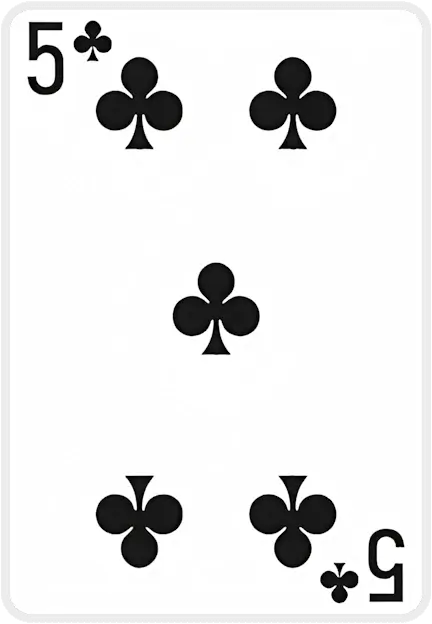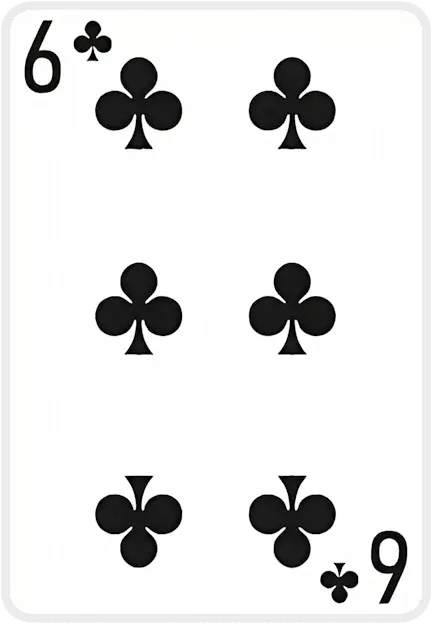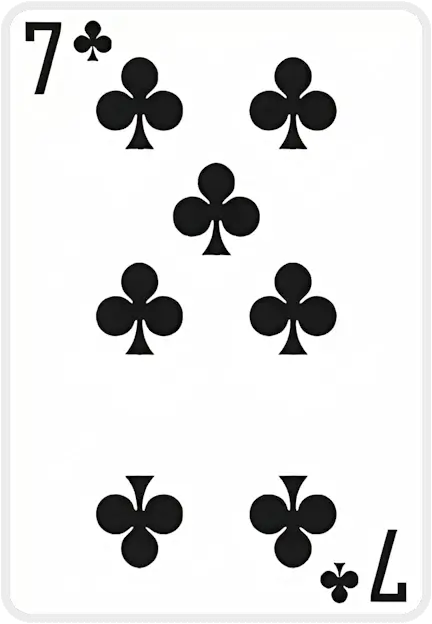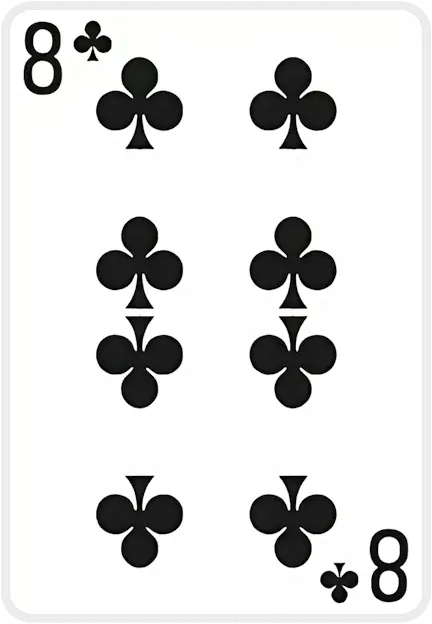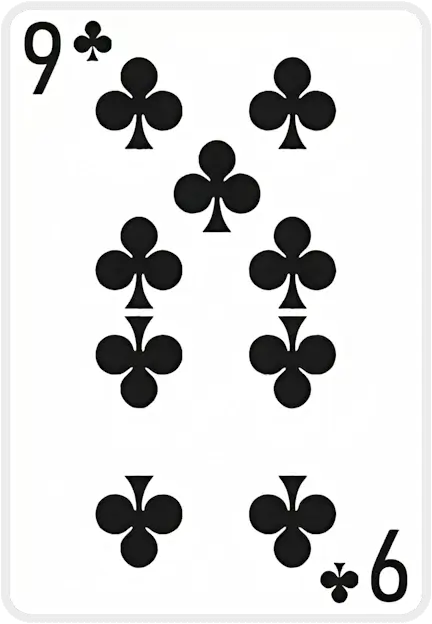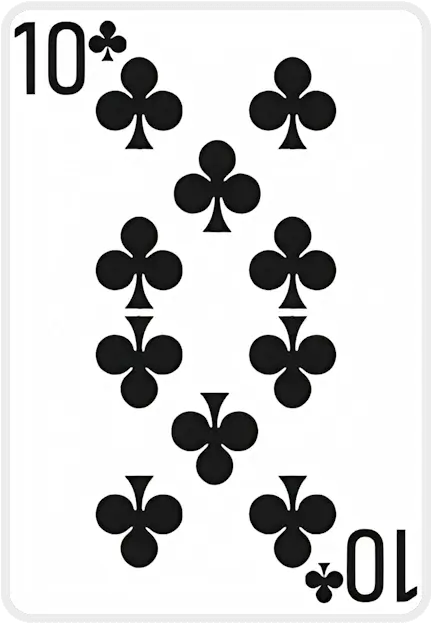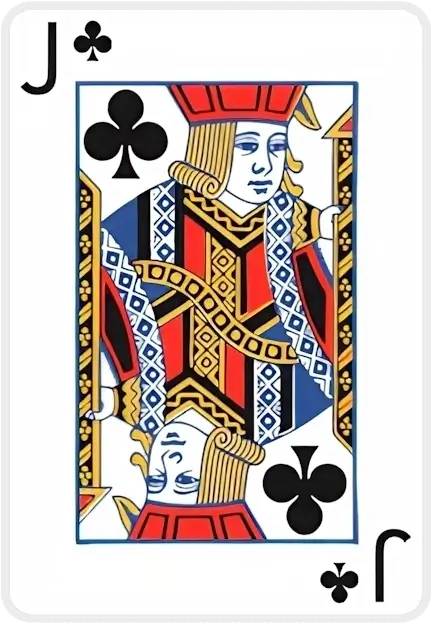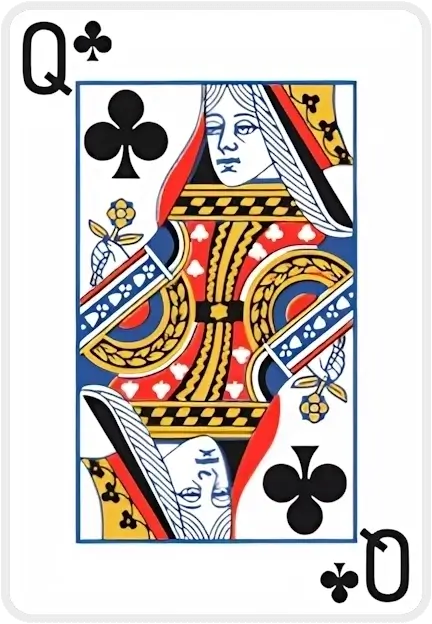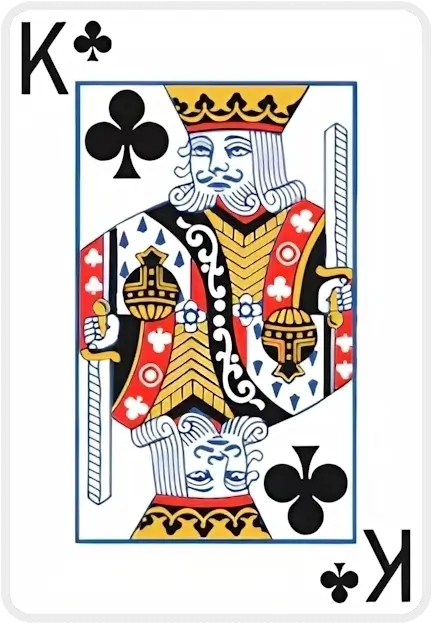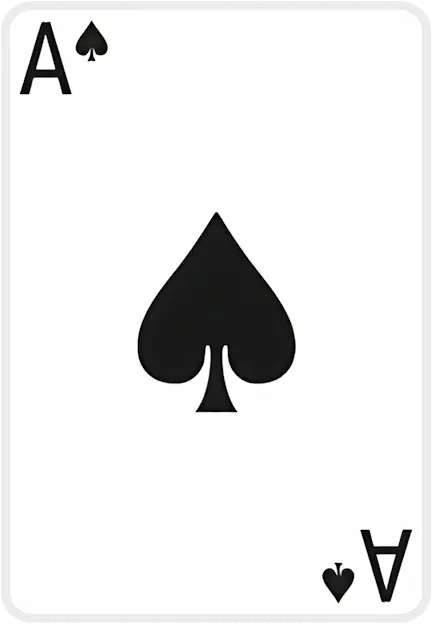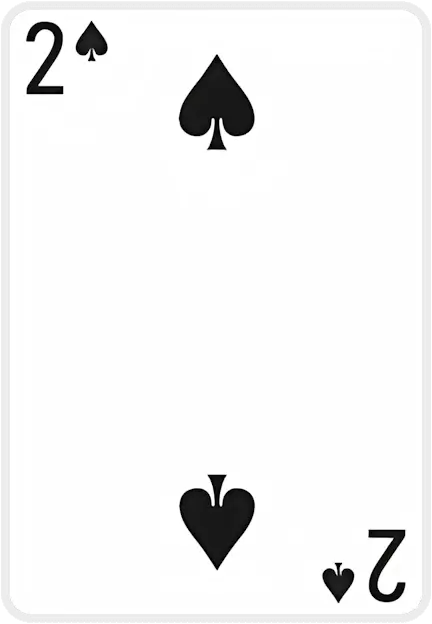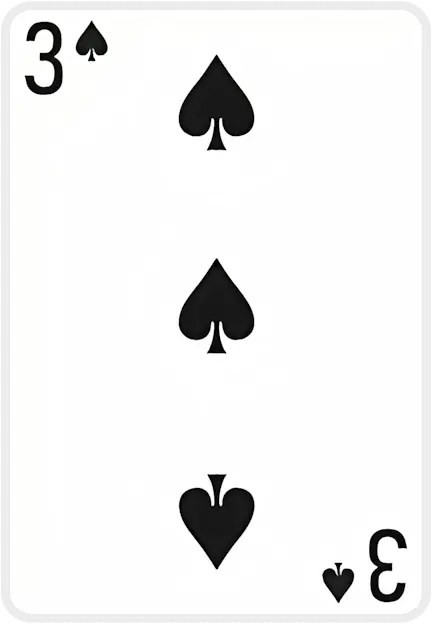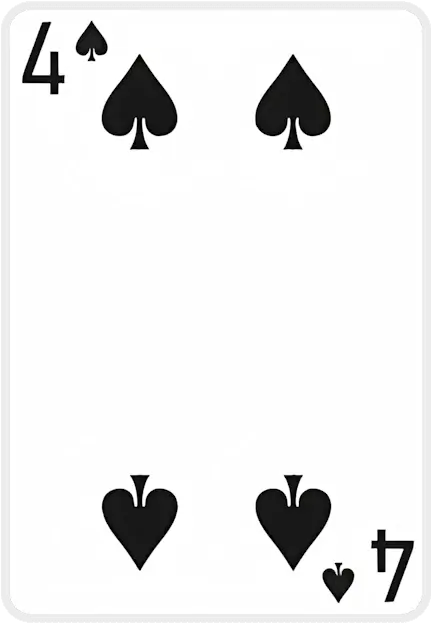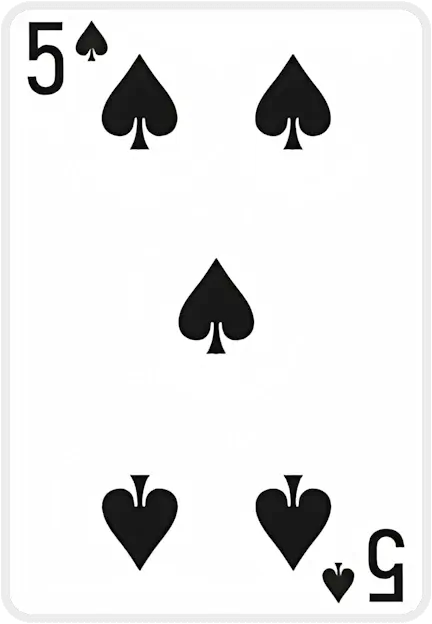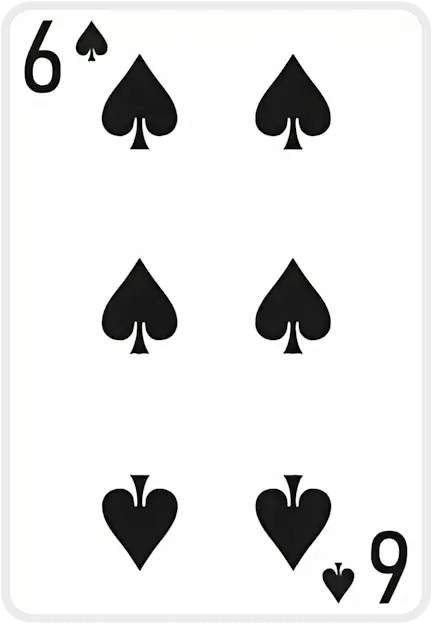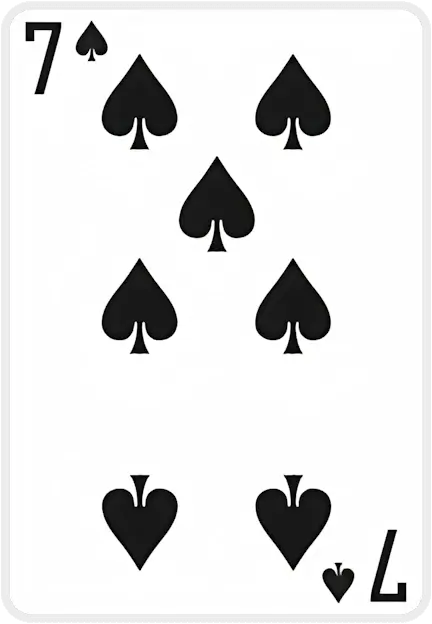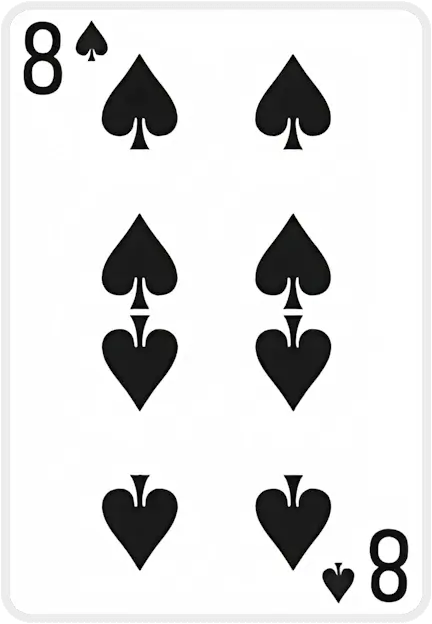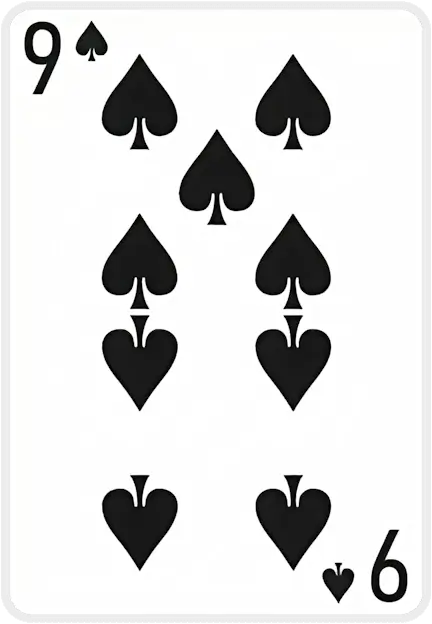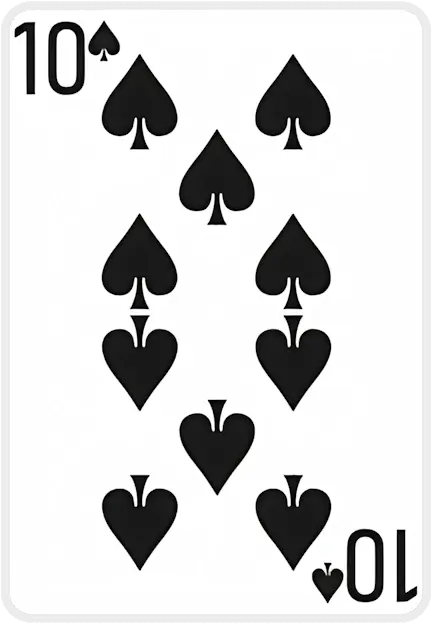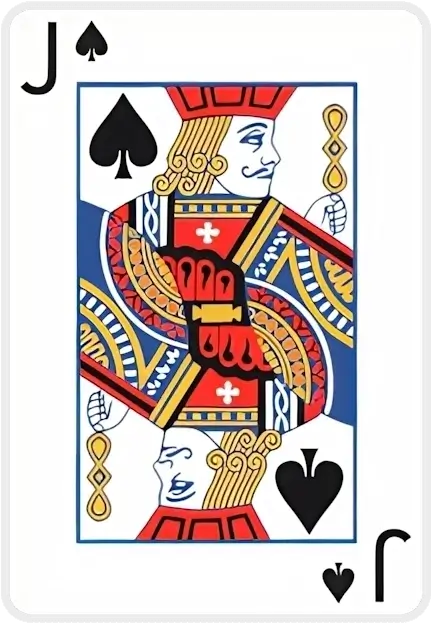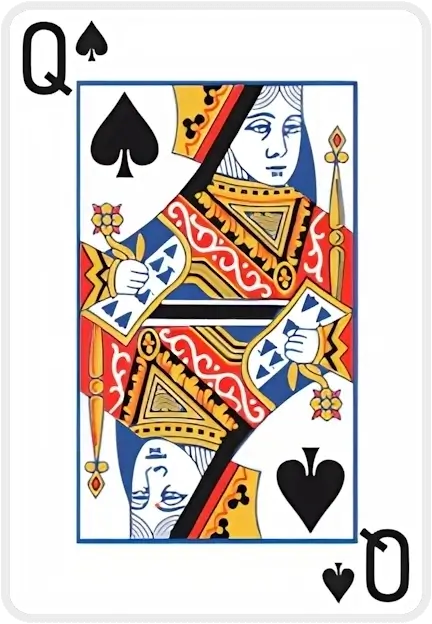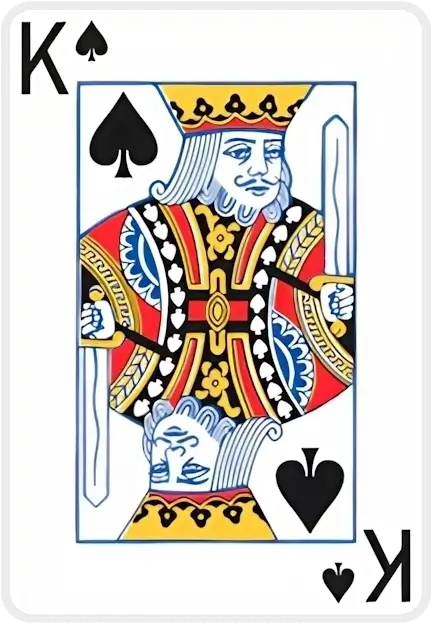Cannot drop, your card needs to be of an opposite suit colour
Cannot drop, your card needs to be one rank lower
Cannot move multiple cards to foundation
Card suit doesn't match foundation pile suit
Card can only be dropped on top of a card pile
Cannot deal cards when there are empty tableau piles
You can only move {0} card(s) at a time based on the current free cells and tableau
The cards don't add up to 13 and cannot be moved
The card is inaccessible and move cannot be performed
Cards must be in sequential order (one higher or lower)
Trefoil Solitaire
Trefoil Solitaire – Play Online, Rules, History, and Tips
Trefoil Solitaire is a challenging single-player card game in the fan solitaire family, known for its distinctive three-card tableau piles (like a three-leaf trefoil or clover). This classic patience game is free to play online at SolitaireX.io, where it’s listed under the “Other” free games category. Trefoil is actually an easier variant of the 19th-century game La Belle Lucie, designed to improve your chances of winning. Don’t be fooled, though – it’s still a tough game: Trefoil is considered one of the hardest solitaire games to win overall, with skilled players winning roughly 25–40% of the time. Below we’ll cover the rules, how to play, the history behind Trefoil, plus some tips and tricks to boost your success.
Rules and Gameplay: How to Play Trefoil Solitaire
A typical Trefoil Solitaire layout at the start of a game. Four Aces are placed as foundation starters (top), and 16 “fan” piles of three cards each form the tableau (bottom). The goal is to move all cards onto the four Ace foundations in ascending order by suit (Ace→King). All cards are visible from the outset (an open game), and once a tableau pile is emptied, it cannot be filled again.
Setup: Trefoil uses a standard 52-card deck. At the start, the four Aces are removed and placed to begin the four foundation piles, one for each suit. The remaining 48 cards are dealt into 16 tableau piles (also called “fans”) of three cards each, all face-up so you can see every card. There is no stock or reserve – all cards are dealt out on the tableau, making Trefoil a game of perfect information. An empty space (if a pile is cleared) cannot be filled with any card – once a pile is gone, it’s gone.
Objective: The aim is to move all 52 cards to the foundation piles, building each foundation up in suit sequence from Ace to King. You win when all four foundations show complete sequences from Ace through King.
Allowed Moves: Only the top card of each tableau pile is available to play at any time. You can move a tableau card either onto a foundation or onto another tableau pile if it follows the required sequence. On the tableau, cards are built down by the same suit in descending rank. For example, you can place the ♣️Q (Queen of Clubs) onto the ♣️K (King of Clubs) because it’s one rank lower in the same suit. Only one card can be moved at a time, and you cannot move entire sequences in one go. If a pile becomes empty, you’re not allowed to fill that space with any other card (no reusing empty spots). This means every move counts – you can’t relocate cards arbitrarily, so plan carefully.
Building on Foundations: Whenever an Ace is placed (at game start) or a subsequent card becomes available, you build the foundation piles up in suit. Each foundation will start at Ace, then 2, 3, 4, and so on up to King of the same suit. For example, after Ace of Hearts is in place, only the 2 of Hearts can be played on it, then 3 of Hearts, etc. Any time you uncover a card that can go to a foundation, you should move it there immediately – it will only help you, since getting cards to their foundations is the ultimate goal.
Redeals (Shuffles): One of the unique features of Trefoil (inherited from La Belle Lucie) is that you’re allowed a limited number of reshuffles when you get stuck. After you have made all possible moves with the current layout, you may gather all the remaining tableau cards (leaving the foundations in place) and shuffle them together to redeal into new piles. Trefoil allows up to two redeals – in other words, you can reshuffle and redeal the cards twice when you get blocked. To redeal, just scoop up all tableau cards and deal them out again in fan piles of three cards (if the cards don’t divide evenly into exactly three per pile in the final deal, one or two smaller piles may form). The foundation piles stay as they are while you redeal. Redeals give you a fresh chance to unstick the layout, but use them wisely since you have a limited number.
“Draw” Move (Last Resort): After your final allowed shuffle (i.e. when you have no redeals left and are still stuck), Trefoil rules grant a special one-time move known as the “draw”. This allows you to pick any one buried card from a tableau pile (not just the top card) and pull it out to the top of its pile or play it to another pile or foundation. The draw is essentially a last-resort cheat to rescue a card trapped beneath others. You can only do this once per game, and traditionally only after the last redeal is done. (Some modern digital versions might let you use the draw at any time, but the classic rule is to save it for the very end.) The name “Three Shuffles and a Draw” comes from La Belle Lucie’s rules, referring to the two redeals plus this one draw move allowed. In practice, use your two shuffles first, and save that single draw for when you’re completely out of moves – it can often be the difference between victory and defeat.
History and Origins of Trefoil Solitaire
Trefoil Solitaire has a rich history connected to the origins of solitaire (patience) games in Europe. Solitaire games originated in the late 18th century (circa 1780s) in Europe, possibly in the Baltic region. These solo card games became popular as a leisurely pastime (and even as a form of fortune-telling in their early days). By the 19th century, many variants emerged and spread across France, Germany, Britain, and beyond.
La Belle Lucie, the parent game of Trefoil, is one of the classic old patience games – its French name means “Beautiful Lucy.” This game and its variants were so popular that they acquired many alternate names over time. In fact, La Belle Lucie is also known as Alexander the Great, Clover Leaf, Midnight Oil, The Fan, or (descriptively) “Three Shuffles and a Draw,” among other names. Trefoil Solitaire itself is named after the trefoil (three-leaf clover), reflecting the three-card fan layout of its tableau piles. Trefoil was introduced as an “easier” variation of La Belle Lucie, giving players a better chance to win by starting with aces already on the foundations. By removing the aces at the start and allowing the draw move, Trefoil significantly improves win probability compared to the original game. This made Trefoil an appealing alternative for those who loved La Belle Lucie’s concept but found it frustratingly difficult – as one source quips, “if you enjoy [La Belle Lucie] but would like to win more often, try Trefoil”.
Over the decades, Trefoil and its sister variants (like Shamrocks, another fan-solitaire offshoot with its own twist) have featured in numerous solitaire collections and software. Some authors and software even blur the names – for example, one list cites Trefoil as having “other names like Alexander the Great, Midnight Oil, The Fan, or Three Shuffles,” though those titles more properly belong to the whole La Belle Lucie family. No matter the name, the enduring appeal of Trefoil Solitaire lies in its blend of simplicity (all cards visible, straightforward rules) and challenging strategy. It’s a game with roots in the golden age of patience games, yet it continues to entertain and stump card-game enthusiasts in the digital era.
Tips and Tricks to Improve Your Trefoil Solitaire Game
Because Trefoil is a difficult game to win, a good strategy and careful planning are crucial. Here are some tips and tricks from solitaire experts and experienced players that can help increase your odds of success:
- Always move cards to the foundations whenever possible. Since the goal is to build up all suits from Ace to King, you should immediately play any available card onto a foundation pile if it fits. Cards sitting in the tableau that could be on foundations are doing you no good – moving them frees space and unveils new opportunities.
- Avoid burying lower cards under higher cards of the same suit. In Trefoil’s tableau, you build down by suit, which can sometimes create deadlocks. For example, if you place a 7♣ on top of an 8♣, you’ve trapped that 8 until the 7 moves – and the 7 can’t move unless an 8 of the same suit becomes free elsewhere. Be mindful not to create sequences that block the natural order. In particular, beware of Kings: you can’t move a King in the tableau at all (since nothing is higher), so any card underneath a King is stuck until that King goes to a foundation. Try to play Kings to the foundations as soon as you have all lower cards of that suit out.
- Use redeals wisely. You get at most two shuffles, so don’t waste them. Make all possible moves before redealing. Often it’s best to use the first redeal once you truly hit a dead end in the initial layout, then squeeze as much as you can out of the second layout before using the final redeal. Each shuffle is essentially a second chance – the deeper you get into the game before using it, the more impact it can have.
- Save the “Draw” for when you absolutely need it. The single draw move (plucking out a buried card) is your last resort. Use all your normal moves and both redeals first. When you reach a point where no moves remain in the final deal, then use the draw to free a crucial card that can reignite progress. Using the draw too early might leave you helpless later; using it at the critical moment can turn an “unwinnable” deal into a win.
- Plan ahead and visualize moves. Since all cards are visible from the start, take a moment to scan the tableau and identify where key cards are (for example, locate the Aces and low cards that need to reach foundations, and see what’s blocking them). Form a plan for which sequences to uncover first. This foresight will help you decide which moves to make and which to hold off. Sometimes it’s worth NOT moving a card in the tableau if doing so would create a blocking sequence – look at the consequences of each move.
- Practice and patience. As with all solitaire games, especially tough ones like Trefoil, practice will improve your skill. Don’t be discouraged by losses – each game is a new puzzle. Over time you’ll recognize common patterns (like which piles tend to get stuck) and develop a sense for the right moves. Trefoil is partly luck (the shuffle matters), but there’s a lot of skill in maximizing that luck.
By keeping these strategies in mind, you’ll gradually improve your win rate and find the game more rewarding. Trefoil Solitaire may be unforgiving, but that just makes victory all the sweeter when you finally solve the puzzle and successfully move all cards to the foundations!
Final Thoughts
Whether you’re a solitaire veteran or a curious newcomer, Trefoil Solitaire offers a satisfying blend of difficulty and depth. Its roots in old European card traditions give it a classic charm, while its strategic gameplay keeps you coming back for “just one more try.” Remember, you can play Trefoil Solitaire free anytime on SolitaireX.io – challenge yourself and see if you can beat this notoriously tricky patience game. Good luck, and have fun mastering Trefoil!
Sources: Key facts and rules in this article have been verified from game rule repositories and expert sources, including solitaire game archives and Britannica, to ensure accuracy for our readers. Enjoy your game of Trefoil Solitaire, and may the shuffles be in your favor!
Case Studies
All figures below come directly from our database. Using first-party data ensures every insight is evidence-based, up-to-date, and privacy-respectful.
| Game Tier | Stand-out Titles | Win Rate |
|---|---|---|
| Quick Wins | Spider (1 Suit), Hole-in-One, TriPeaks | 70–84% |
| Fair Challenges | Solitaire (Draw 1) – 913 k plays FreeCell, Golf |
45–63% |
| Expert-Level | Spider (4 Suits), Forty Thieves, Double Scorpion | ≤11% |
Curious which moves turn the odds in your favor? Explore all the data & strategies →
What people say about us
Interview with Beverley Walker-Daury
At 87, Beverley Walker-Daury shares how SolitaireX brings joy, companionship, and purpose to her days in a retirement home.
Player Interview: Poul Andersen
Poul Andersen shares how playing SolitaireX helps him keep his brain sharp and active.
Player Interview: Peter Gross
Peter Gross, 81, shares how SolitaireX became his go-to place for relaxing Freecell games and friendly competition.
Player Spotlight: St0Sh0’s Record-Breaking Runs on SolitaireX
We sit down with speed-solitaire sensation St0Sh0 to talk record times, favorite variants, and why SolitaireX is his go-to card-game hub.
Fresh from the SolitaireX Blog

Decks & Destinations: The Solitaire Traveler Series Part 5: Berlin — Strategy & Culture Walks
Berlin’s rhythm of reflection and structure pairs perfectly with Solitaire’s calm logic. This guide invites travelers to explore the city’s culture and canals with a few mindful moves between each stop.

Decks & Destinations: The Solitaire Traveler Series Part 4: Tokyo – Mindful Play in a Fast City
Tokyo’s fast pace hides countless moments of calm — perfect for a mindful round of Solitaire. This traveler’s guide pairs iconic spots with short, focused play sessions to restore clarity on the go.

Decks & Destinations: The Solitaire Traveler Series Part 3: Seattle — The PC-Era Vibe
Seattle’s rain-washed calm pairs perfectly with Solitaire’s quiet focus. This traveler’s guide shows how to blend sightseeing, coffee breaks, and short, finite puzzles into a mindful PC-era rhythm.

Decks & Destinations: The Solitaire Traveler Series Part 2: London – From “Patience” to Presence
London’s slower moments pair perfectly with Solitaire—once known locally as “Patience.” This traveler’s guide blends calm city rhythms with mindful card play to help you recharge between adventures.
Latest guides crafted by Stoyan Shopov and Kalin Nikolov
Golf Solitaire Mastery: Strategy, Stats & Flow
Deal 7 columns of 5 face‑up cards (35 total). The remaining 17 cards*form the stock; flip the first stock card to start the waste. You may move only exposed tableau cards, and only if the rank is exactly one higher or lower than the waste top. Suits don’t matter. When no move exists, flip a new waste card. Clear all tableau cards to win.
TriPeaks Solitaire Mastery: Strategy & Analytics
Two peaks are dust; one stubborn ridge remains. Your waste shows a 9. The tableau flashes 10‑J‑10‑9‑8 like a heartbeat. You nudge the 10, feel the cadence lock in, and—without overthinking—trace a neat descent that crumbles the last peak. That tiny spark of *flow* is why TriPeaks hooks serious players: rhythm, restraint, and the rush of a run that arrives exactly on time.
Pyramid Solitaire Mastery: Strategy, Stats & Joy
Picture the pyramid down to its last stubborn tier: a Queen pinned beneath a ridge, a lone Ace on the waste, and a King begging to be burned for tempo. Heartbeat, breath, click—then the whole structure yields in a rush. If you’ve hit that razor‑edge finale, you already know Pyramid’s secret: small decisions, made in the right order, change everything.
FreeCell Solitaire Mastery: Strategy & Analytics Guide
I have a 15 years personal, lived experience—picture a scene built from thousands of session logs and notes from serious players: It’s late, and the board looks jammed. You clear a single column, free one cell, and suddenly a 9♣‑8♦‑7♣‑6♦ chain glides into place, untying the knot you stared at for ten minutes. The rush isn’t luck—it’s the quiet pleasure of a plan snapping into focus. When did FreeCell last feel less like “killing time” and more like practicing a craft you can actually master?
Media About Us
0


